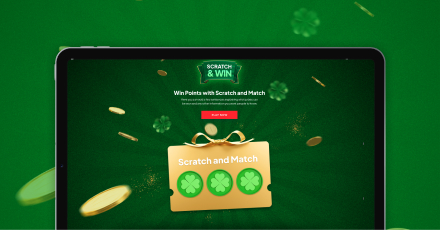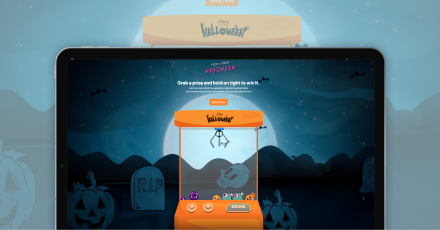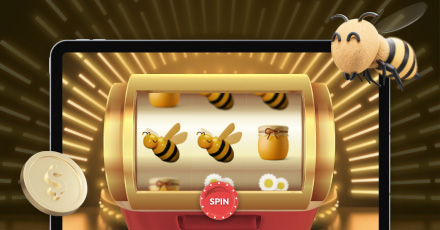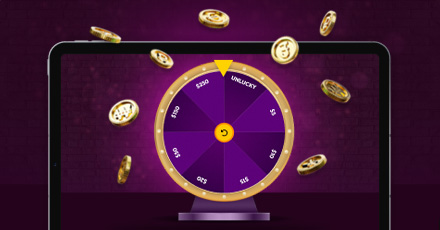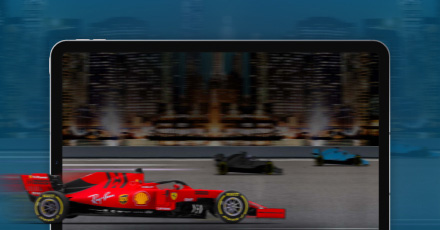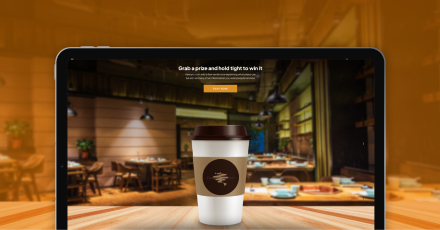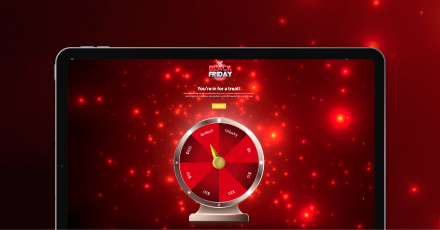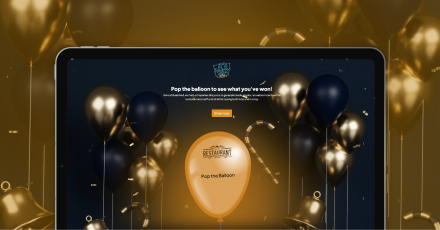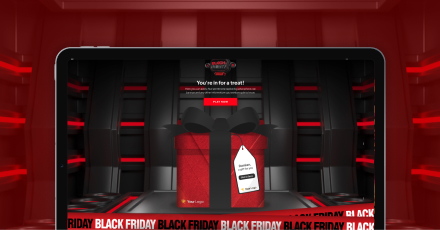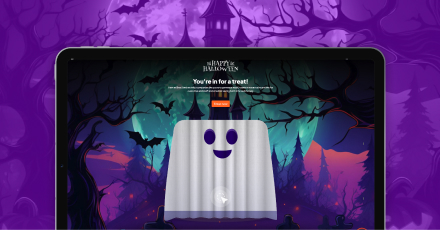Gamification can increase employee engagement and improve customer experience. Done right, it breathes motivation into employees and converts online audiences into loyal customers. Many don’t realize how effective gamified incentives can positively impact your business internally, not just externally. So, what is gamification, and how are organizations using it to make work more enjoyable and shopping ultra gratifying? How can you motivate your sales team using gamified incentives? Keep on reading to find out!
Table of contents:
What Makes Gamification Successful?
Good Examples of Gamification in Business
Does Gamification Increase Engagement?
What Are the Best Ways to Implement Gamification?
Tips When Using Gamified Incentives for Your Team
BeeLiked Gamification Solutions
If you’re new to the world of gamification, this guide’s for you.
What Is Gamification?
Gamification….sounds like fun but it’s a little more serious than just playing games. It’s a way of enhancing systems, services, organizations, and activities so that users are motivated and engaged. The need to compete, improve, and ultimately win is coded into our DNA and gamification takes advantage of this.
Are you familiar with Kahneman and Tversky’s Prospect Theory? First introduced in the late 1970s, the behavioral economic theory showed that small incentives inspire people to make an extra effort to do something they otherwise would not. Put another way; people are motivated to work a little harder if a reward awaits them.
Gamification combined with rewards is a perfect way of creating fun experiences for prospective and existing customers. But there are multiple other applications for internal or external business incentives. For instance, gamification can be used to encourage sales teams in particular when targeting leads.
Benefits of Gamification
There are plenty of numbers to back up just how beneficial gamification can be:
- 83% of employees who participated in gamified training felt more motivated to do their work.
- 80% of workers believe game-based learning is more engaging.
- Companies that use gamification see a triple-digit increase in conversion rates.
1. Promotes teamwork
Perhaps one of the greatest benefits of gamification is how it promotes teamwork and collaboration, issues that have become even more challenging as more organizations make a digital transformation and embrace remote work.
2. Increases customer engagement
Gamification can enrich and extend customer interactions and increase user engagement because it offers unique and fun ways for them to interact with a brand.
3. Builds customer loyalty
Customers are looking for value when they look for products or services and you can give them this with the help of gamification. It allows you to reward positive behaviors, build long-lasting relationships, and ultimately deliver the value customers demand.
4. Lead Generation
More leads are something that every business strives to achieve because this means more revenue. Gamification lead generation solutions can help create high-quality leads, gather marketing opt-ins, and identify what customers need.
5. Product Marketing
Gamification can offer many benefits in terms of product promotion. It’s a way of turning basic marketing campaigns into something that keeps customers coming back for more. By incorporating common game elements such as scoring points, leveling up, and earning virtual currency it boosts user engagement and drives conversions.
Challenges of Gamification
Gamification is a great tool for all kinds of businesses and the results can be amazing, but only when it’s used correctly. For a gamification campaign to be successful, there are several challenges to be overcome. They include::
- Lack of a goal or desired outcomes: Research is required to determine what kinds of game mechanics, objectives, and rewards are more likely to excite a particular audience. There also needs to be a clear goal to work towards so that the gamification marketing campaign has a clear direction and purpose.
- Over-reliance on extrinsic rewards: Relying on extrinsic rewards can be counter-productive, whereas intrinsic rewards can be more motivating because they are self-determined and don’t depend on reinforcement by the environment.
- Lack of alignment with business objectives: Gamification can provide valuable data that can be used to inform other business processes. However, any gathered data is useless if your games don’t align with business objectives.
- Technical and design issues: Games are typically multifaceted and engineering them is a complex process. Some games are simple to create, such as quizzes and scratch cards. However, more complex games require additional resources.
- Integration: Gamified elements need to be integrated into pre-existing processes and platforms.
- Challenge updates: Gamification should be able to adapt to use patterns, industry trends, customer behavior, and game updates if it is to remain relevant.
How Does Gamification Work?
Game-Design Elements
Gamification is a terrific motivational tool in the workplace but it’s so much more than that. It also facilitates more effective training and learning. Traditionally, employee incentives were somewhat boring, however, game mechanics can help employees work toward more meaningful and measurable goals in real-time.
Using game design elements and game principles in non-game contexts, gamification can be used to educate, entertain, and also engage. The most important game elements include:
- Points: These visual progress identifiers are commonly used in sports, reward cards, and video games.
- Badges: These are a way of displaying achievement and are used very successfully in the military and schools.
- Leaderboards: A need to be at the top of a leaderboard is what makes this element so successful when used in sports, sales, and general life.
Game Principles
The success of gamification and games depends on certain principles. Ultimately, game developers want to design games that are an engaging experience for users and the following game principles help them achieve that goal.
- Rules: Rules are a requirement because they ensure users play the games fairly, with no one having an unfair advantage.
- Goals: Goals add purpose, and focus, and allow for measurable outcomes. Goals are a way of measuring the quality of gamified interaction.
- Challenges: The use of challenges motivates participation. Using predefined quests and increasingly difficult objectives it’s possible to keep players engaged to maximize their points.
- Feedback: This is an important principle because it shows players how their actions relate to achieve the goal.
- Rewards: It’s important to give players something they want as a reward for achieving the goal.
- Competition: Competitive interest pushes people to perform better. It has the powerful quality of engaging a person without willing to impede opponents.
The Difference Between Gamification and Incentives
While gamification is a type of incentive, if you examine gamification vs incentives you’ll see there are some subtle differences.
Incentives are used as a motivational tool to encourage individuals to perform specific tasks in exchange for a reward. Take a car seller, for example. Their objective might be to sell 100 cars in one month. If they achieve that target they’ll get an extra amount of money in their paycheck.
Gamification uses reward as one of the tools for motivation. For example, if a person completes a specific objective in a goal-focused game, they win a reward.
The major difference between incentives and gamification is the type of motivation each provides. Incentives tend to generate momentary motivation, or extrinsic motivation. While gamification combines intrinsic and extrinsic motivation, it also provides the right challenges, making people strive to outperform themselves and others, just for the sake of it.
Types of Gamification
There are several different types of gamification. Here are the most common.
Business Gamification
What is business gamification? It’s a way of increasing the competitive spirit of employees, strengthening their commitment, improving productivity, encouraging creativity, and helps employees develop specific skills.
Educational Gamification
Gamification for learning aims to improve the teaching and learning process via the dynamics of the game. It uses reward systems, points, rankings, missions, and challenges to enhance student motivation.
Gamification in Hospitality
Gamification in the hospitality industry can bring fun and entertainment to the overall customer experience. It can also show off a business’s unique personality and help separate it from competitors. Let’s not forget another important outcome is increased bookings.
Gamification in Sales
Gamification in sales uses game-like techniques to positively reinforce behaviors. It might use competitions, leaderboards, badges, instant notifications, or points. It’s a way of turning pipeline tasks such as calling prospects, closing deals, and setting meetings, into a game.
Gamification in Health and Wellness
If you want to increase participation in a health and wellness program, one very successful strategy is to use healthcare gamification. Game elements make it more engaging and encourage people to participate.
Gamified Marketing
What is gamification in marketing? It’s an enhanced marketing technique that uses design elements from games to attract and retain customers. Consumers are encouraged to perform an action because of a reward or elements of competition.
Gamification in Retail
Humans have a natural impulse to achieve, be rewarded, and be engaged. Gamification in retail taps into this impulse. It helps improve the shopping experience, attract new customers, and retain existing ones.
Gamification in Travel
Gamification in travel uses gaming methods to increase engagement and motivation and encourages consumers to achieve specific goals. Ultimately, the goal is to increase the overall experience for the consumer by making visits more fun, engaging, and interactive.
What Makes Gamification Successful?
Games are fun, engaging, and mentally stimulating. The human brain is hard-wired to enjoy games. Witness the resurgence of board game nights and the popularity of pub quizzes and casinos. Or consider the over 900,000 gaming apps Apple’s App Store offers or nearly 350,000 mobile gaming apps Google Play has available.
Just like people will only replay board or online games because of the joy they get from them, successful gamification strategies only work when users get:
- The necessary motivation to perform a task and receive a reward or recognition.
- To carry out tasks at their own pace and skill level, i.e., a sense of control.
- The right cues or triggers, including progress bars, to complete a task.
And just like in games played for entertainment, employees want to feel a real sense of competition, even if they’re competing with themselves.
Good Examples of Gamification in Business
There’s no shortage of examples of companies that have profited from gamification strategies.
- Nike’s running app, Nike+, is a masterpiece of gamification that’s used by customers to track their physical activity. Nike uses the collected data to market directly to customers in the future and has seen its member base more than double in the first years of the program.
- Google has gamified the travel expense reporting process for its employees. When employees don’t spend their entire travel allowance, they can donate the unused portion to a charity, apply it to a future trip, or receive it in their next paycheck. The result? Submission compliance reached 100%.
- Bosch, a global supplier of technology and services and a company celebrated as a workplace innovator, uses workplace gamification to build HR analytics skills by turning working with data into a more enjoyable experience.
- Domino’s Pizza chose to use gamification when it introduced Pizza Hero, the chance for pizza lovers to create their very own pizza. Once users have created their very realistic pizza, one-click meant their creation was ordered. Users were also given the opportunity to experiment with dough, sauce, cheese, and toppings to create the perfect pizza.
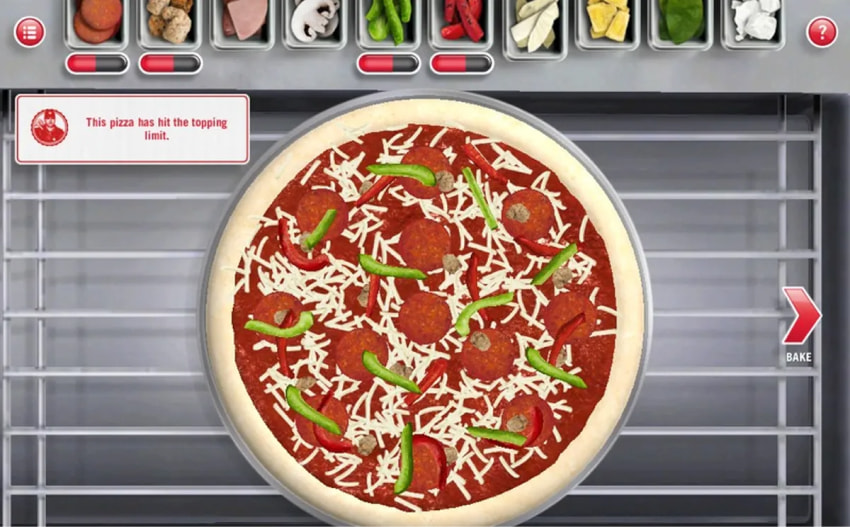
- Chipotle: This US fast-food chain that specializes in bowls, tacos, and Mission burritos made to order in front of the customer took advantage of gamification with its Scarecrow game. The game challenges players to rescue animals and educate people about where different foods come from. Players can work their way through various levels and win a prize at the end.
- Microsoft: Ribbon Hero is a video game that Microsoft created to help users of Microsoft Office 2007 and 2010. Users are given challenges that are designed to teach them about a particular feature. The game integrates with Facebook so users can compare scores and post their achievements.
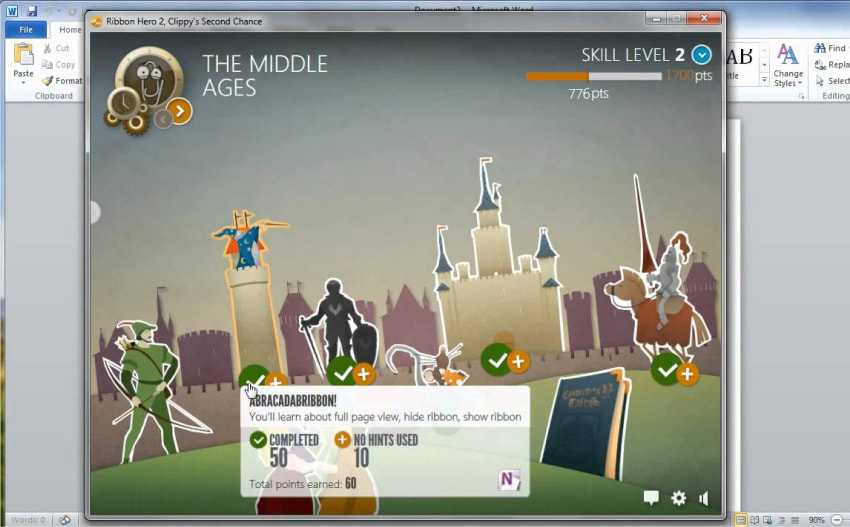
- Reddit: Reddit chose to use karma points for its gamification strategy. Redditors can earn karma by posting and commenting or by giving awards.
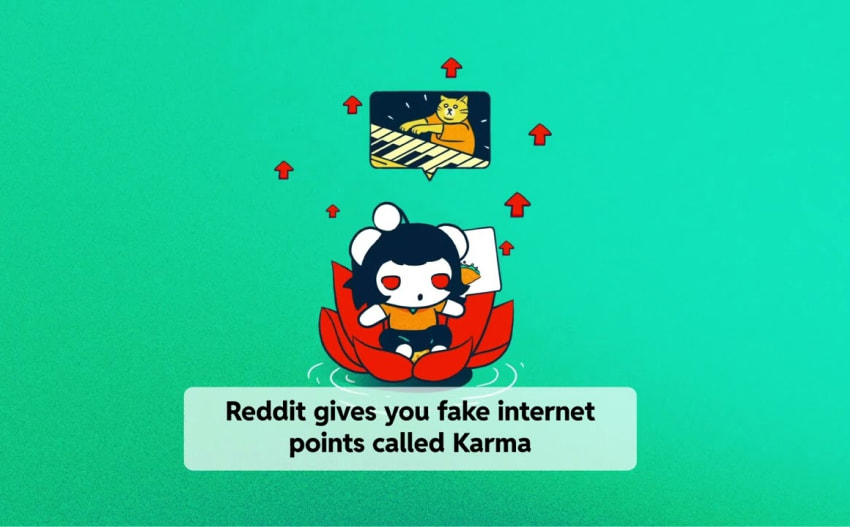
Why Does Gamification Work?
Workplace gamification works for employees and customers alike because it triggers powerful human emotions that translate into positive experiences. It also rewards “good” behavior and gives people a true sense of achievement. And when employees are happy, your customers are too, as they receive an improved customer experience.
Does Gamification Increase Engagement?
Employees report feeling much more motivated and less bored when they receive gamification training. Good gamification design fosters better engagement by keeping employees and teams playing to gain more points and rewards or to discover more information.
What Are the Best Ways to Implement Gamification?
Gamification can be traced back to 2003, when inventor Nick Pelling coined the term. But it wasn’t until 2010 that companies began to see it as a way to better appeal to online customers and improve customer retention. And it’s only more recently that it’s been seen as a way to engage and motivate employees.
The good news is gamification is pretty darn simple to implement. Using gamification techniques like leaderboards, quizzes, challenges, and more, you can quickly increase engagement and loyalty and generate positive user experiences. Here are some tips to remember as you adopt gamification into the workplace.
- Keep a game’s complexity to a minimum. Too many rules, elements, or mechanics will cause people to become frustrated and quickly lose interest.
- Reward people for playing or performing, not “winning.”
- Leaderboards are fun, but the focus shouldn’t be on who’s on top. Including team-based comparisons, not just individual ones, lets people feel good about their personal performance.
- When possible, match game elements with how they would play out in the real world.
Finally, not every game has to be super fun for employees or customers to enjoy it. Of course, everyone loves to have fun, but people enjoy a game because of how they feel about playing it. Games should be fun enough to keep people engaged, but they should also include things like problem-solving, strategizing, and collaboration, all skills people use in their daily lives.
Tips When Using Gamified Incentives
Think About What Incentives Your Sales Team Wants
Understanding which rewards your team will appreciate will help your incentive program’s success. By offering the chance to win a prize that you know is desired, your team is much more likely to work harder in order to get the chance to win.
Think About Your Budget
If you’re working with a large team and offering a range of prizes within your gamified incentive, you need to consider what targets you’ll set for them to meet the criteria. BeeLiked offers an incentive program tailored to your needs as a brand and your budget. Not only is it fully tailored, but it’s also fully managed to remove the hassle!
Make Your Targets Motivating But Achievable
When offering rewards based on performance, it’s important that the targets set are achievable for your sales team. You want to make sure that your team not only has the resources to achieve their targets but feels with more effort, they are achievable. In the same instance, you don’t want your targets to be too easy, which could decrease productivity. Finding the balance can be hard, but with our rewards program, we can help you choose the right model based on your needs and budget.
BeeLiked Gamification Solutions
There are many different types of gamification, such as challenges, games of chance or luck, or quizzes. Gamification apps are popular choices for some employers, often used to gamify existing employee incentives. Gamification can also be used very successfully by marketing teams.
Incentivizing employees isn’t something new. Whether it’s done through bonuses or benefits, businesses have been incentivizing their teams for decades. Many people don’t realize, though, that by using targeted gamified incentives, you can give your employees exactly what they want in return for specific targets met. We’ve found this works especially well across all divisions of a company. Customizing incentive programs based on tailored targets provides a platform to reward teams in the way they want to be rewarded.
We’ve got a range of gamification solutions below. BeeLiked’s platform hosts a range of pre-built promotion-type templates, including:
- Slot Machines are something we’re all familiar with and they equally well for customer and employee incentives. They’re fully customizable in terms of prizes, messages, automated emails for entrants, sounds, and themes. Slots are also very effective for collecting data.
- Mystery Box is another fun and exciting game that’s fully customizable. You get to choose the number of boxes and prizes along with many other details. Within a few hours, your first mystery box game can be up and running. These games bring a competitive edge to any marketing campaign but also help to build that all-important bond with customers.
- Grabber is an online version of the popular grabber or claw game you’ll find in many arcades. You can choose to embed it where you please including webpages, as a banner, or pop-up widget. There is the option to choose from pre-designed templates or build your own using BeeLiked grabber creator.
- Loyalty programs can be made more fun by including easy-to-win games of chance, such as Spin the Wheel. Rewards like vouchers, coupons, and special content can be offered to boost sales and drive revenues.
The same solutions can be used to educate, motivate, and engage employees while optimizing workflows and attracting top talent.
Are you ready to engage your audience? It’s easy to get started with Beeliked enterprise gamification solutions.
